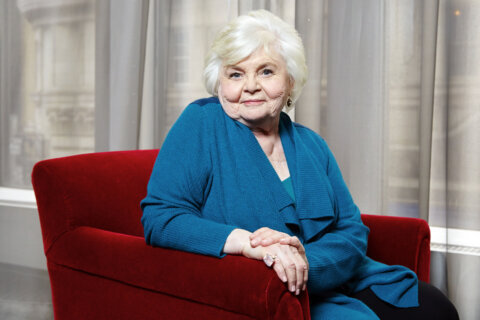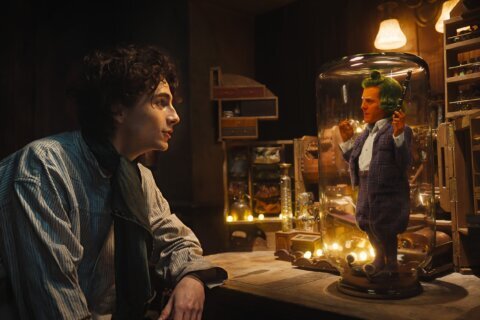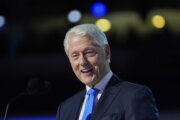Jason Fraley, WTOP film critic
WASHINGTON – After wrapping the “Bourne” trilogy, director Paul Greengrass joked that Hollywood should make another sequel called “The Bourne Redundancy.”
This weekend, that became a reality with “The Bourne Legacy.”
It’s the first film adapted from Eric Van Lustbader’s seven “Bourne” novels written after the death of Robert Lundlum, who penned the original trilogy of novels from 1980-1990.
No doubt, it’s a dangerous undertaking to follow a series as successful as “The Bourne Trilogy” (2002-2007) with a star as popular as Matt Damon. After all, Jason Bourne is the James Bond of the new millennium, though Daniel Craig may beg to differ (What’s with secret agents and the initials “JB”?).
Damon was slated to return, but dropped out when Greengrass declined. That forced the filmmakers to completely change the story, as Van Lustbader’s novel featured Jason Bourne as a main character.
Would the fresh take be an unnecessary epilogue, or allow the series to continue with new faces?
The question poses a classic trap for critics to let preconceived notions cloud their experience, but viewers should take their cue from CIA Chief Eric Bryer (Ed Norton). He tells a staffer to stop looking at Bourne’s case file and put away photos of Damon. There’s a new plot at hand.
Turns out there were nine total agents who were biologically altered by the Treadstone and Blackbriar government programs. Fearing a scandal, Bryer decides to pull the plug on the entire operation, feeding the agents triangular pills that make them drop dead, one by one, with bloody noses.
That is, except for one. Aaron Cross (Jeremy Renner) escapes his execution, outsmarting a drone strike in the Alaskan wilderness. Off the grid and addicted to CIA medication, blue and green pills known as Kems, he enlists the help of scientist Dr. Marta Shearing (Rachel Weisz) to help him cycle off his meds, a journey that takes him from Maryland to the Philippines.
It’s great to see Renner finally get his day in the sun, after Oscar nods for “The Hurt Locker” (2008) and “The Town” (2010). This year has been big for him at the box office with “Mission Impossible: Ghost Protocol” (2012) and “The Avengers” (2012).
I went into this one very leery of watching a new lead actor. While you can never replace Damon’s charm and appeal, Renner makes a fine Roger Moore to Damon’s Sean Connery. His character is superhuman in his abilities, wrestling wolves and sniping drone cameras, but he is refreshingly human in his flaws. His addiction to CIA pills feels like a mixture of “Dr. No” and “Trainspotting,” creating literal and figurative chemistry with Weisz.
“Bourne” diehards can take comfort in a number of familiar faces — Scott Glenn, David Strathairn and Albert Finney — along with a reprise of Moby’s “Extreme Ways” theme. More importantly, the film brings back a key storyteller. Rather than some outsider coming in to produce a knockoff remake, “The Bourne Legacy” hands the directing reins to the screenwriter of the original trilogy, Tony Gilroy. He earned two Oscar nominations for writing and directing “Michael Clayton” (2007), and his writing credits also include “The Devil’s Advocate” (1997), “Armageddon” (1998) and “State of Play” (2009).
“The Bourne Legacy” is a family affair, as Gilroy teams with his younger fraternal twin brothers, Dan, a co-writer who is married to Rene Russo, and John, who edited “Michael Clayton” and “Warrior” (2011). All three are the sons of Pulitzer-prize winning playwright Frank Gilroy.
Throughout the film, you can see Tony Gilroy’s touches as director:
- Transitioning from the blue and green pills to the blue and green logo of a pharmaceutical company.
- Starting with a shot of Weisz in a surveillance camera monitor, only for a door to open right next to it and Weisz to physically enter the shot.
- Allowing key action to happen in the background, showing the hero’s cool under pressure as planes crash and houses burn behind him.
- The pacing of the motorcycle chase climax, even though it runs a little long.
Local viewers will enjoy familiar locations, from Reston, Va., to Bethesda, Md., but the convoluted plot doesn’t quite add up to a satisfying third act. The introduction of a villain assassin comes a little too late and is a little too convenient, as the film bails out while leaving room for another sequel.
But before we all go freaking out about another “remake,” let’s not forget that Damon’s “The Bourne Identity” was itself a retread of Roger Young’s “The Bourne Identity” (1988), and it only got better as the series progressed.
Time will tell whether this franchise is truly “Bourne again,” as the writers suggest by naming their hero “Cross,” but, for the most part, I enjoyed this ride.
★ ★ ★
The above rating is based on a 4-star scale. Read more from WTOP Film Critic Jason Fraley by clicking “Fraley on Film” under the “Living” tab above, following @JasonFraleyWTOP on Twitter, and checking out his blog, The Film Spectrum.
(Copyright 2012 by WTOP. All Rights Reserved.)








